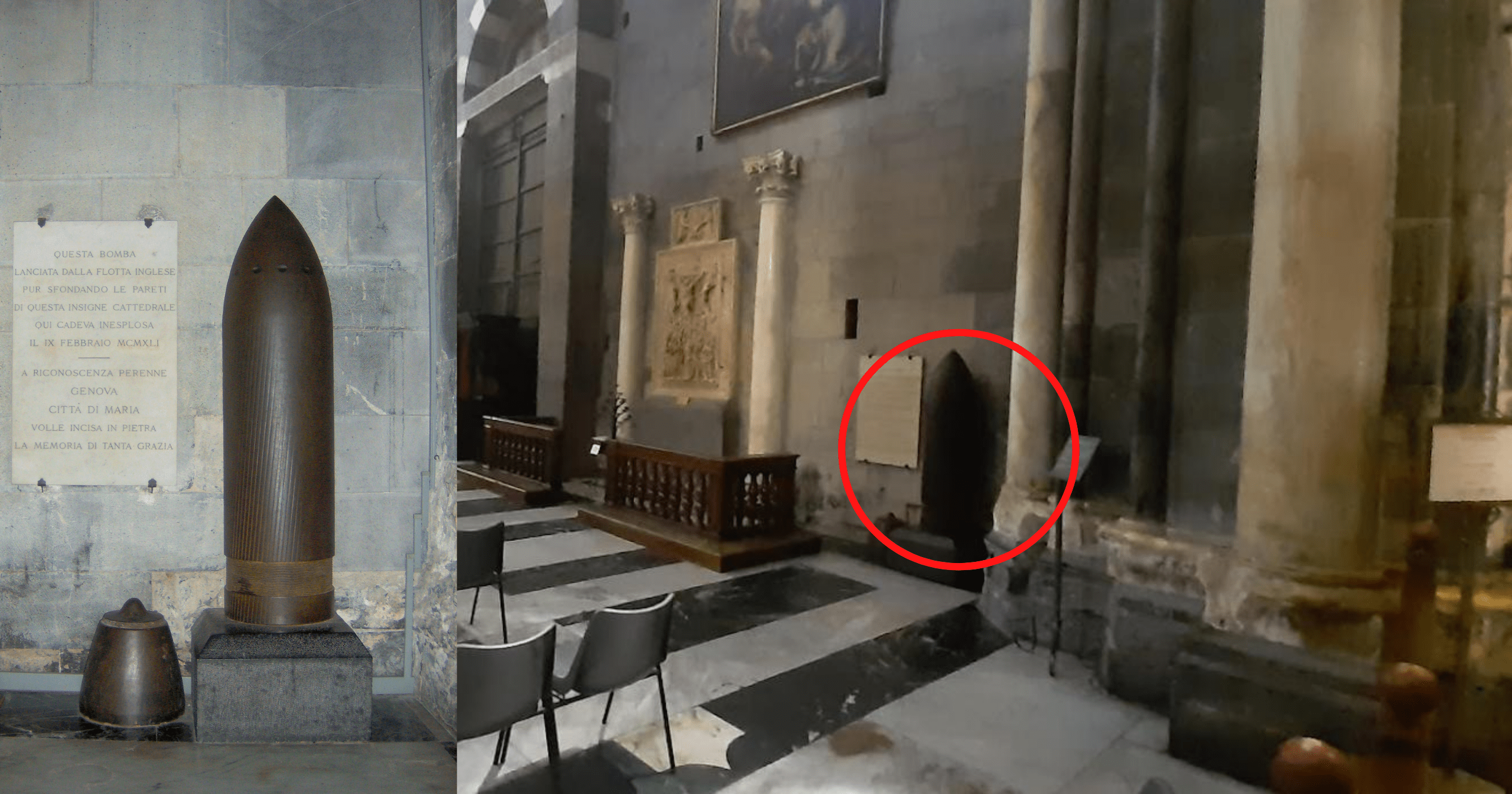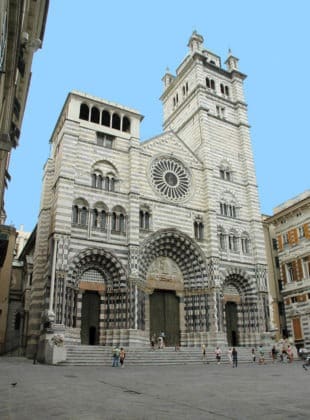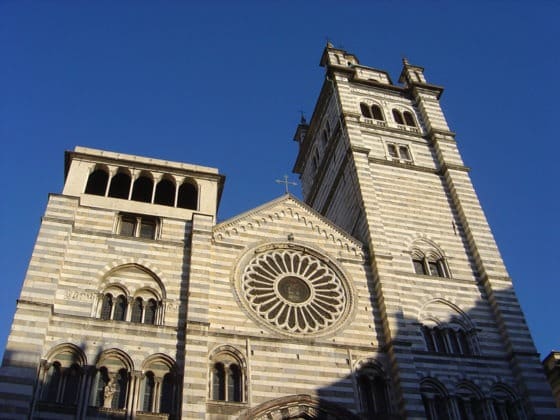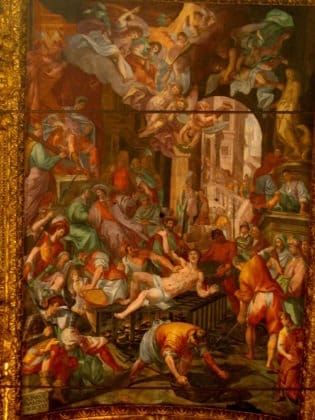The Genoa Cathedral in Italy, also known as the Metropolitan Cathedral of Saint Lawrence, is a marvel of antiquity.
Consecrated in 1118, excavations under its grounds uncovered Roman light walls and pavements, even pre-Catholic sarcophagi. Fundamentally a medieval Cathedral, it’s later additions are an amalgam of Romanesque, Gothic, and Late Renaissance architecture.
Works of art inside include great frescoes and murals in Byzantine and Renaissance styles. Sculptures from the early to late Renaissance abound as well.
But the most curious site of all, might be the WWII era artillery shell in it’s nave.
How exactly did it arrive?
The mishap happened on February 9th, 1941 during the shelling of Genoa under Operation Grog. A crew error on the HMS Malaya accidentally fired a 15 inch armor piercing shell into the south east corner of the cathedral’s nave.
Miraculously, the bomb didn’t go off, and the shell remains there to this day.
An inscription gives thanks for the cathedral’s escape:
“This bomb, launched by the British Navy, though breaking through the walls of this great cathedral, fell here unexploded on February 9, 1941. In perpetual gratitude, Genoa, the City of Mary, desired to engrave in stone, the memory of such grace.”





















